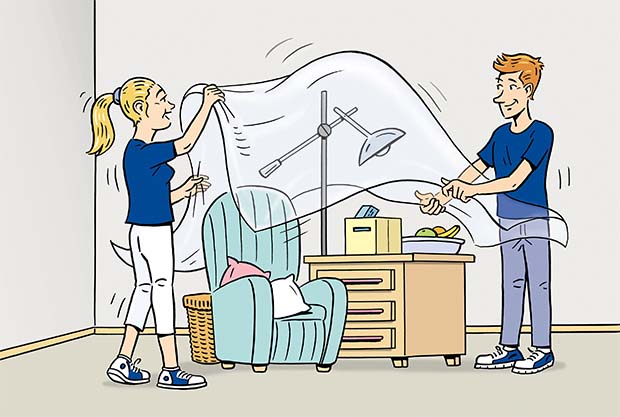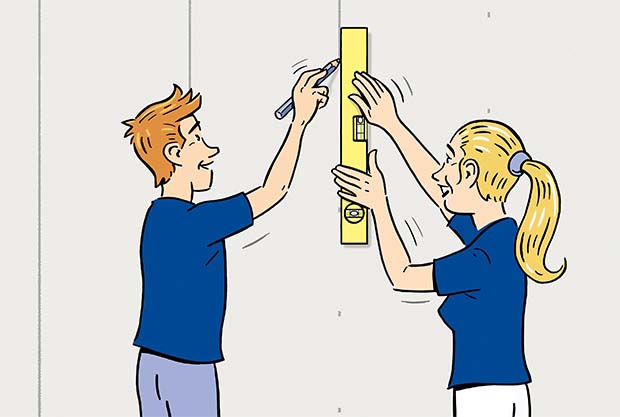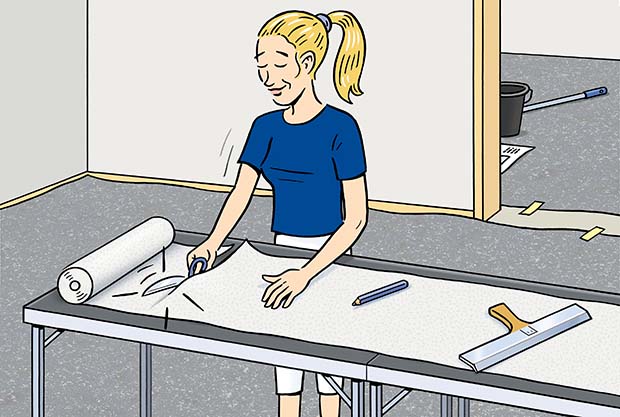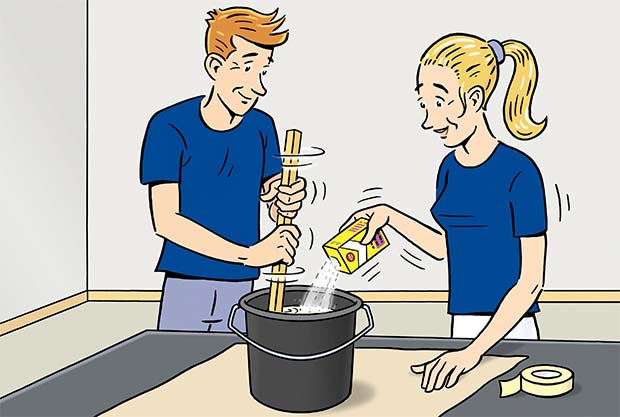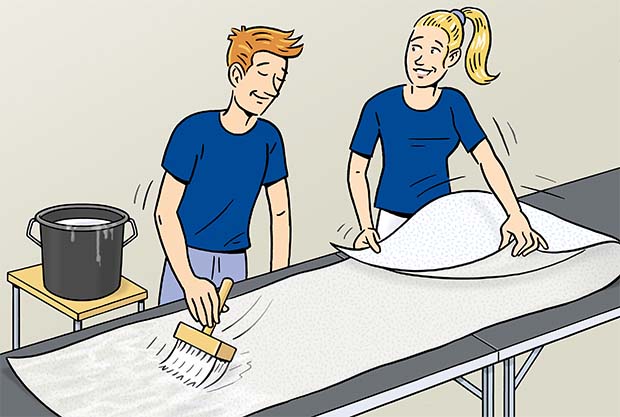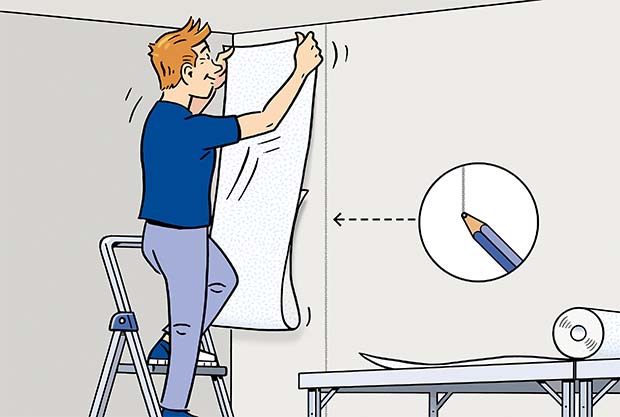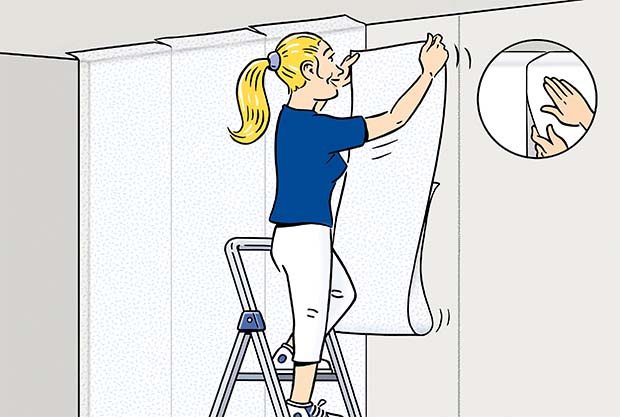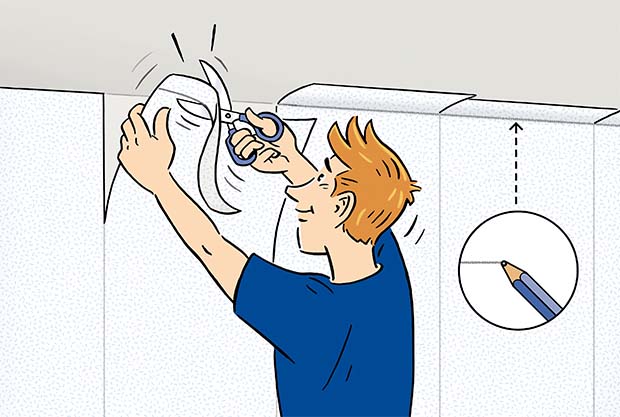Step-by-step instruction
Wallpapering isn’t so difficult. Your new wall design will take shape almost of its own accord, providing you consider a few key tips. Be sure that you have the right tools to hand – and then get going on the wall! Then add colour to give your room a very individual, home-made makeover.
Step 1 – Preparation
- Either completely empty the room or move everything to the centre of the room and cover with film
- Dismantle sockets and light switches
Important note: Don’t forget to switch off the power
- Cover an area approx. 1 metre wide along the wall if the floor is already laid
Tip: Use a non-slip cover so that your ladder does not taken on a life of its own
- Fully remove old wallcoverings
- Set up the pasting table
- Get your materials ready
Step 2 – Mark on the first length
- Subtract 2 - 3 cm from the width of the wallcovering. Mark this width dimension at several points vertically along the wall. Use a spirit level to connect the points in a straight line
Tip: Always start in the corner of a room at the window and work “away from the light”
Step 4 – Mix up the paste
- Mix and stir the paste recommended for your type of wallcovering in accordance with the manufacturer’s instructions
Step 6 – Position the first length
- Position the pasted woodchip or paper wallcovering on the wall
- Pay attention to the line you have drawn – position the length along it to achieve a straight length
- Take the long folded side, climb onto the ladder, unfold the wallcovering and then lay it along the line you have drawn
- Let it overlap a few centimetres at the top
- There will automatically be an excess width in the corner as the first length has been drawn 2 - 3 centimetres narrower
- If the top part of the wallcovering is positioned properly, use a wallpapering brush to apply light pressure to smooth the length out from the centre to the sides. This allows any excess air to escape and spreads the paste evenly to leave a crease-free length of wallcovering on the wall
Step 7 – Apply additional lengths
- Position the next lengths butt-jointed on the wall. This means that the lengths butt against each other but do not overlap
- Once again here, allow for an excess length at the ceiling
- Now use the wallpapering brush to smooth each length out perfectly as you go
- If necessary, use a seam roller to press down the seams
Step 8 – Cut off excess lengths
- Using a pencil, draw a line along the edges or use scissors to press firmly into the corner. Pull the wallcovering slightly from the wall and cut along the line with scissors. Using a Stanley knife can easily tear woodchip and paper wallcoverings
- Cut out power sockets and light switches along their metal surrounds
Important note: Be sure to switch off power in advance by throwing the relevant trip switch on the fuse board/switch box
- You’re done! You’re done. Now take a break. You can paint the wall once you have let it dry for approx. 24 hours
Tip: Avoid draughts and excessive heat when drying the wallcovering

